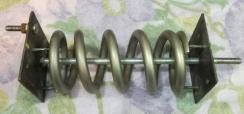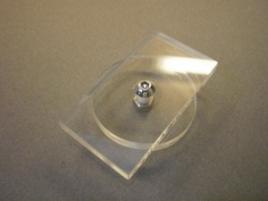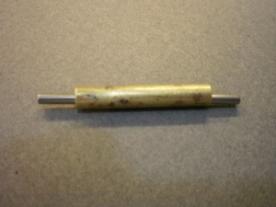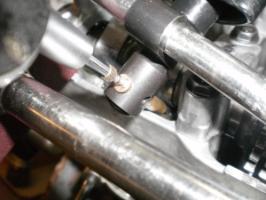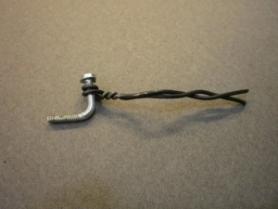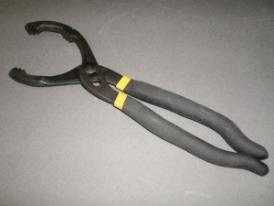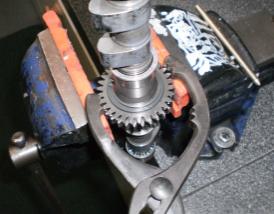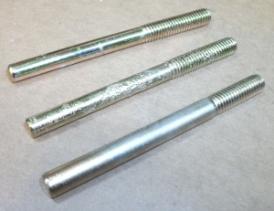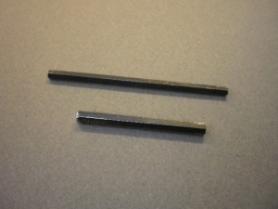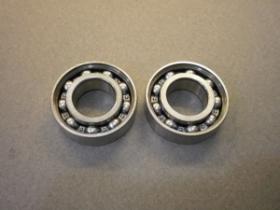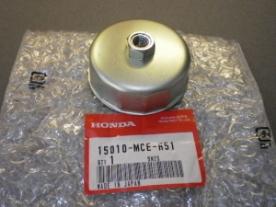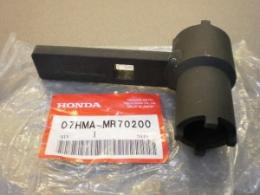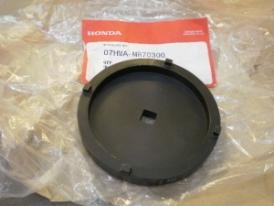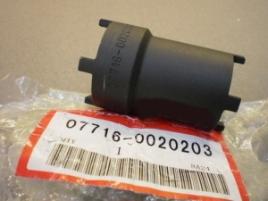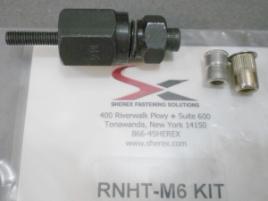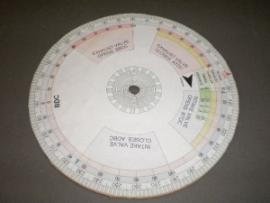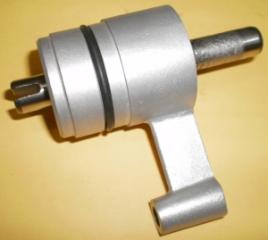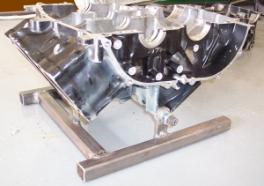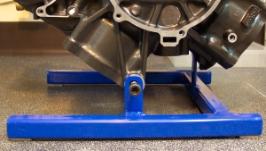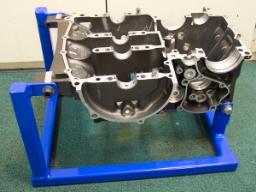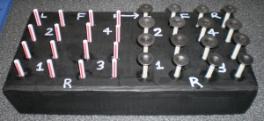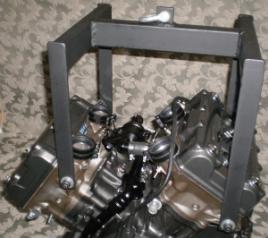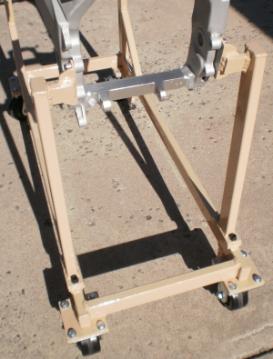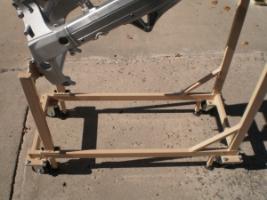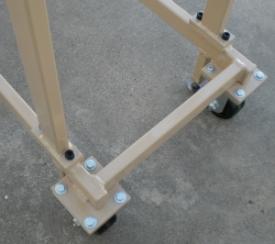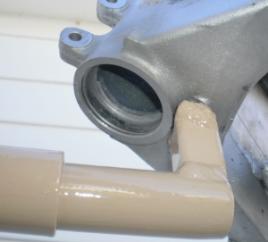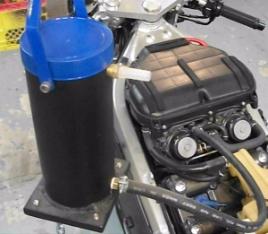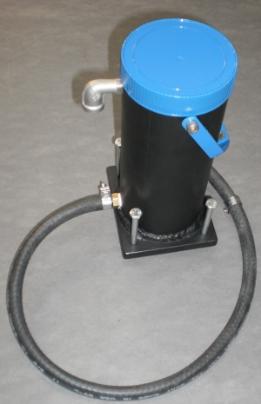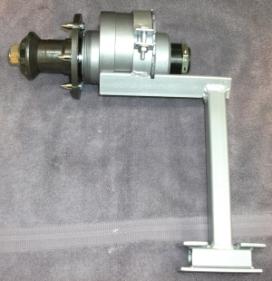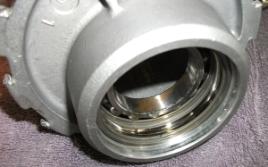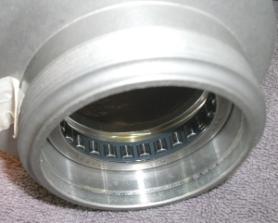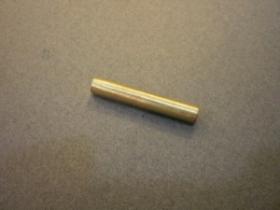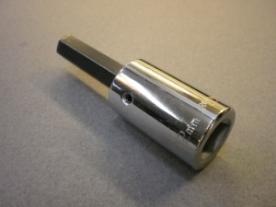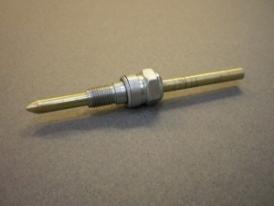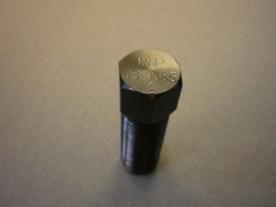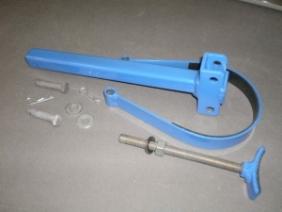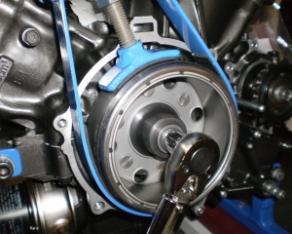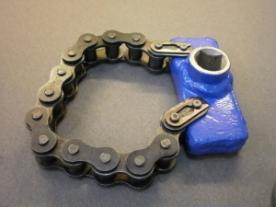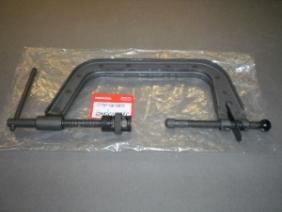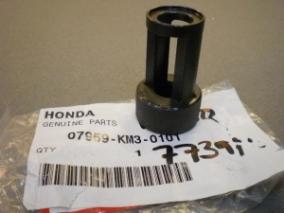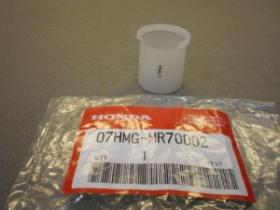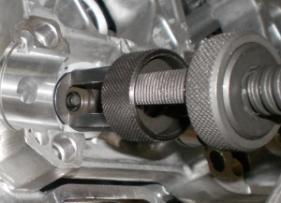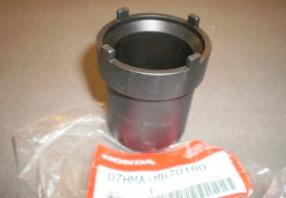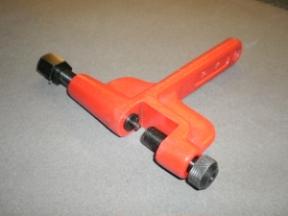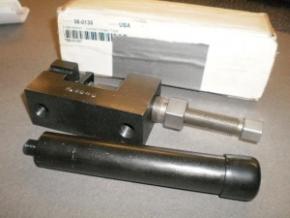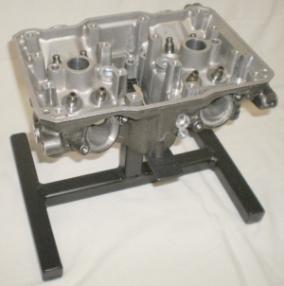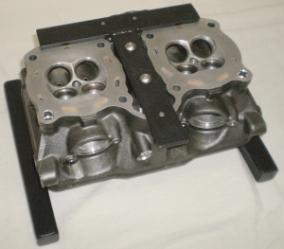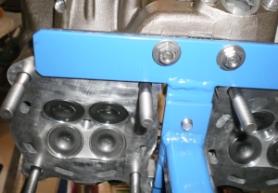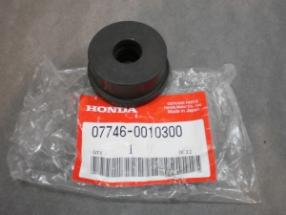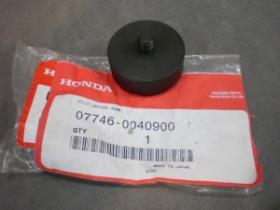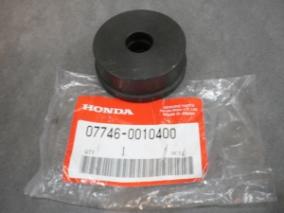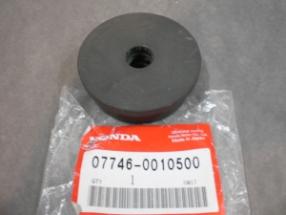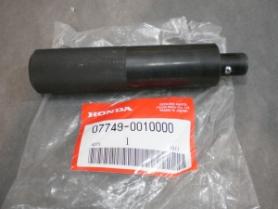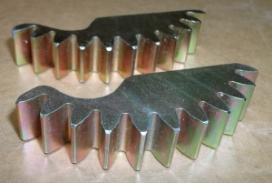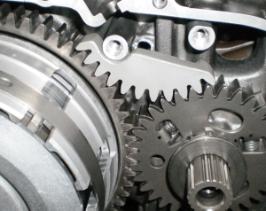Rear Wheel/Tire Balancing Stand
The RC30 uses a single sided rear wheel that does not contain bearings within the wheel itself. This wheel attachment design makes it a challenge to statically balance. You can buy RC30 rear wheel adapters and stands but I had some Rc30 parts so I made one instead.
The stand is essentially the rear hub and axle mounted to a custom bracket that is gripped by a vice. There is slack in the vice end so it can be leveled as you tighten the vise. There are a couple of things that need to be done to make this work though. It wasn't just the custom bracket that was needed.
1. The Honda rights side bearing is a very wide needle roller with an inboard integral seal. Both of these are undesirable for balancing. I sourced a narrower needle roller bearing that does not have seals. This bearing will roll easier at near zero speed during balancing.
2. The Honda left bearing is a double ball roller bearing. I only wanted to use one bearing to reduce the friction at near zero balancing speed. I did this by removing the bearings and gutting the outboard bearing of the balls and inner race. I pressed both the complete bearing and the bare race into the left side. This ensured the inner (complete) bearing was seated nicely using the Honda tool. I would have preferred to gut the inner of the two bearings but that would make the bare race difficult to remove later. As it is now assembled the bare outer race will just get pushed out by the inner bearing if you want to use the hub on a real motorcycle. Do not just leave the one bearing out. If you do, the aluminum casing will grip the remaining bearing too tightly so the axle will not rotate as freely as it has to.
3. I didn't want to use a sprocket carrier or the spacers/washers so I cut off a piece of plastic ABS pipe to use in their place.
I was concerned that the axle would not be balanced good enough for use as a tool but testing showed axle balancing is not a concern.
I think the narrow needle bearing was about $15. That was the only thing I had to buy to make this. The hub was a damaged one that someone had used a screwdriver and a hammer on to try to remove the "Nut".
This balancer works better than I hoped for. It will balance to within a few grams and gives very consistent results. You can't ask for much more. It's fairly compact. I like the fact that I can easily take the wheel off, just like on an RC30. If you make one of these balancing stands be sure to address the bearings as I did or you will be disappointed in the performance of it all.
